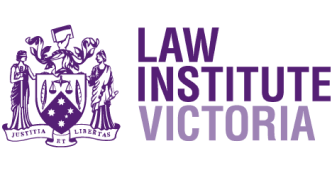Many of us think about family violence as something that leaves cuts and bruises. But violence comes in many forms, and we can’t always see the evidence. Any behaviour in a domestic setting that causes damage to a person, whether physical or psychological, is considered family violence.
Whether you’re a victim or want to be an ally, find out about 9 forms of family violence, the signs, and how separation is approached in this sensitive and often dangerous situation.
9 types of violence
Family violence is about controlling other household members, and it comes in many forms.
- Physical violence — causing physical harm and behaving recklessly in a way that puts someone at risk.
- Sexual violence —coercing or forcing someone into sexual activity, hurting someone during sex, or refusing contraception.
- Emotional violence — bullying or humiliating someone to make them feel worthless or irrational, including gaslighting.
- Psychological violence — using threats and behaviour to induce fear.
- Spiritual abuse — using someone’s spiritual or religious beliefs to control or manipulate them.
- Cultural abuse — harming or dominating someone and using cultural or religious traditions as justification.
- Financial abuse — taking away someone’s financial freedom or accessing their money without permission.
- Verbal abuse — verbally taunting someone, being rude about their appearance, intelligence, or value.
- Neglect — failing to care for a person that they are responsible for or provide for their spouse or children’s needs.
These types of violence can blur into one another and rarely happen in isolation. Physical violence is very unlikely without some other form of intimidation or abuse.
What are the signs of family violence?
Some of the signs a friend or family member may be experiencing family violence include:
• becoming anxious, depressed, withdrawn, or losing self-esteem
• having restrictions on whom they can or can’t see or what they can or can’t do
• having strict timeframes to complete activities outside the home
• having an allowance or not having access to their own money
• not inviting people to their home, or frequently cancelling arrangements
• children in the relationship becoming afraid of the partner and withdrawn or anxious.
What to do if someone is experiencing family violence
Anyone facing violence needs help. Possibly to first recognise that the behaviour is happening, and then to know what steps they can take to escape.
In some cases, someone in a violent situation may not understand that they’re experiencing abuse. Heidi Rogers, psychotherapist and counsellor from Moving Mindsets, says she regularly sees clients who don’t realise, ‘oh, wow, that’s actually not love that is abusive and controlling and violent.’
She recommends if a trusted person wants to bring the topic up, they seed the idea by saying, ‘hey, I don’t know if that’s really quite okay the way that they’re speaking to you or that you have all those rules around what you wear.’
If a victim of family violence is ready to take the first steps out of the situation, Heidi suggests they contact a support agency. These agencies know how to help people safely, including arranging housing, support services and legal help and getting the police involved if necessary.
Separation and family violence
Andrew Wilson, Barrister and Mediator with The Separation Guide, says that the pathway of mediation is difficult when there is violence in a relationship. Whether the abuse is physical or psychological, it is about control, so separation can be dangerous for victims. An abuser separating from their partner may feel a loss of control and become more volatile.
Mediator and Barrister Jack Whelan adds that ‘for people to be able to access mediation, it really does require there to be a power balance.’
Tanya Hibberd, a family law specialist from Aubrey Brown, says that before any court proceedings about divorce can happen, the priority is to ensure the victims of violence are not in immediate danger and have the support they need.
Once court proceedings can continue, the incidence of family violence is considered when property settlement and child custody are decided. It also affects how the court handles the disclosure of information to ensure family violence survivors are protected.
Tanya says whatever happens in court is done ‘with that person’s safety in mind because that person’s safety trumps everything.’
If you’d like to hear more about family violence in separation, listen to the full podcast here.
Meet our Women’s High-Conflict Divorce Coach
Danielle Black

Danielle Black is a specialist Divorce Coach who helps women navigate high-conflict separation, divorce and co-parenting. Her international high-conflict coaching certification and extensive lived experience help her understand what clients are going through. Danielle is passionate about supporting women to create safety and security for themselves and their children from a foundation of courage, strength, and hope.
BOOK A FREE CALL WITH DANIELLE
We understand this content may be upsetting to some readers. If you would like any support, please reach out to one of the support services listed below:
Lifeline | 13 11 14
1800Respect (formerly White Ribbon) | 1800 426 820
Relationships Australia | 1300 364 277
Safe Steps | 1800 015 188
Men’s Referral Service | 1300 766 491
Kids Helpline | 1800 551 800
Beyond Blue | 1300 22 4636
The Separation Guide aims to make separation and divorce simpler, more manageable and less stressful. To find out more about how one of our Network Members could support your separation, take our free 3-minute Q&A.
Disclaimer
The information in our resources is general only. Consider getting in touch with a professional adviser if you need support with your legal, financial or wellbeing needs.















